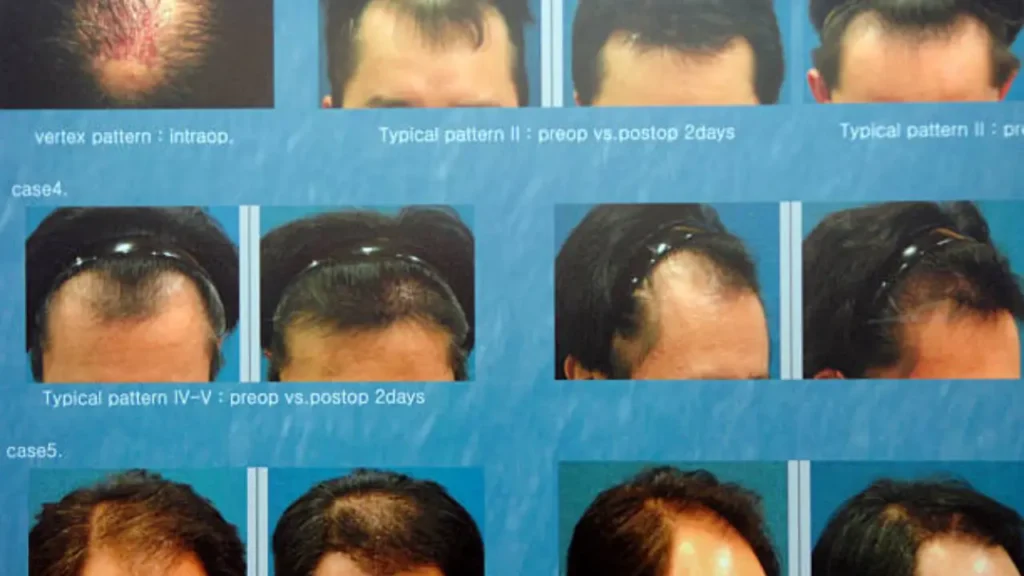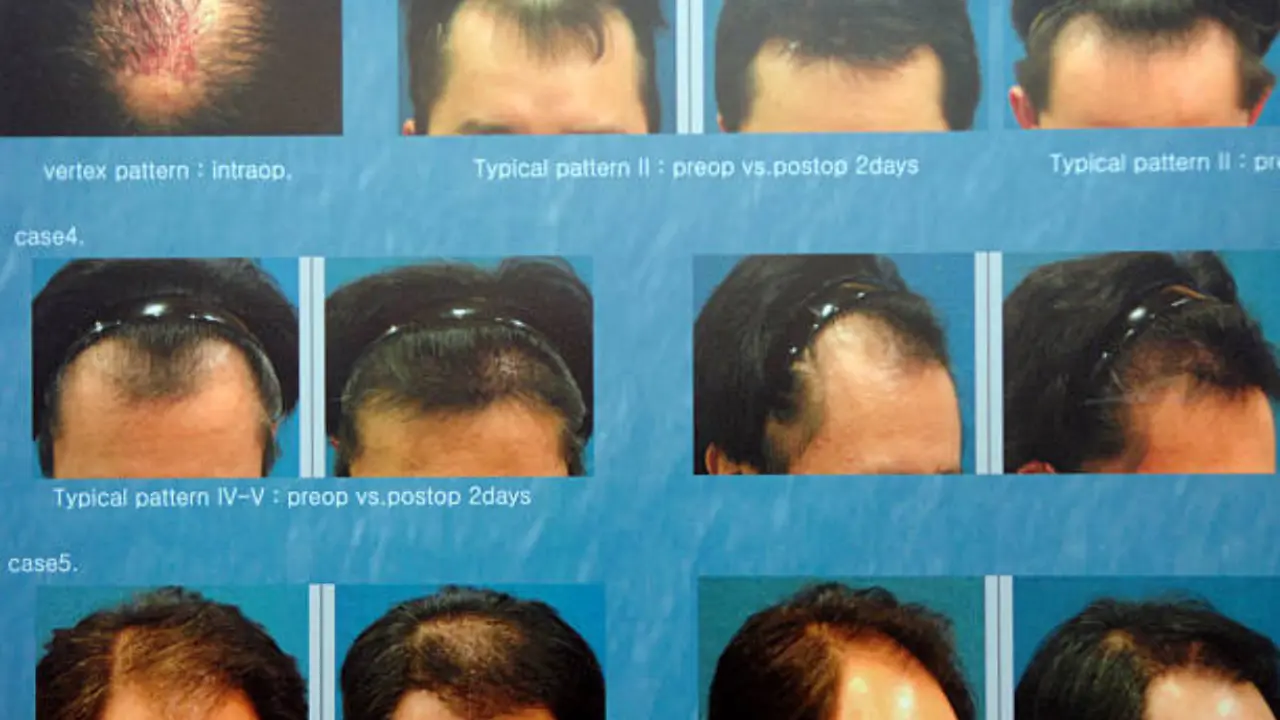Hair Transplant: In this modern era, everyone wants to look perfect and fashionable and that’s the major cause of huge increase in demand for surgical procedures like plastic surgeries and hair transplants. In this article, we are going to explore everything about hair transplant like procedure, side effect, what to expect after the surgery, post transplantation care, difference in cost in india and different famous countries, best centers to get it done, right time to opt for it and etc. let`s know step by step.
What is Hair transplant and Why is it becoming so popular?
Hair transplant is a surgical procedure which helps to migrate/move the healthy hairs from the healthier part of the Donor`s scalp to the patient’s scalp at the region where either the hairs are thinning or has become bald. This magical procedure can give your hair back even if you have become completely bald. This surgery requires well trained doctors so that the patient gets the best results.
In European countries, this surgical procedure started in the 1950s and now has become more advanced and due to its success rate and effectiveness, other countries now also have developed the facility of hair transplants and at the present time, India is also doing very well in the field of Hair Transplant. Recently, Many Indian celebrities like Mohammad Shami( Indian cricketer) and Elvish Yadav(social media influencer) have undergone hair transplant and due to which, this surgical procedure is traveling all across the internet. People are so keen to acknowledge it.
Hair Transplant Procedure
This procedure involves a team of well trained doctors as it’s a matter of accuracy and precision.
- In the preparation phase, the patient gets to know about all the processes and post surgical scenarios and then doctors completely evaluate the patient and try to figure whether the patient has problem of hairline receding or baldness as per norwood scale then the baldness is graded from stage 1 to 7.
- Then follicles are taken from Donor`s back of the scalp area but before doing this, it is made sure that the donor`s area is very healthy. If the donor`s area is not so healthy, it could deprive the patient from getting the expected results. That’s why evaluation and assessment is very important before performing the surgery.
- After performing all the evaluations, doctors design the hairline of the patients according to his/her face shape and age group so that the patient’s hair looks natural and matches the body structure post transplant process.
Now it comes to the transplant process which involves two steps:-
(i) Extraction:- hair follicles are extracted from the donor`s area (backside of the scalp).
(ii) Implantation:- Hair follicles extracted from the donor`s area are now implanted in the recipient`s area wherever he/she is balding. This process requires so much attention and good technique where every hair and every angle should be synchronized properly so that transplant gives the patient, it’s natural look and he/she feels confident in the society.
Right time to visit a doctor for hair problems
Hair problems have become very common nowadays. Everyone is going through some sort of hair issue. Sometimes we think that we have problems with our hair but it’s not always true and it can be natural too. Like if you are observing the falling of 15-20 hairs per day then it’s absolutely normal as there goes a large variety of biochemical processes in our body and while adapting to the environment, our body shows different reactions.

When you are observing excessive hair loss like around 100 hairs, pattern baldness and hair thinning then there can be some kind of stress involved either is dietary, external or mental. In this case, you must consult a good doctor so that problems don’t get carried away.
The right age and conditions for hair transplants
There is no such a perfect age for hair transplant but it is believed that mature people like above 20 are good choices for transplant but the person with more age gets more stable transplants and requires less medications and care as compared to lower ages.
People who are struggling with pattern baldness, complete baldness or partial baldness( baldness in a short region) should go for hair transplants as this surgery is the last hope for our hairs so it should always be kept as the last choice. Natural hairs are the best hairs and we should always take care of them.
Cost of hair transplant in India and other countries
Cost of hair transplant varies with the patient’s requirement like how much grafts does he/she require to be implanted.
Also, it depends on the expertise of a doctor. A very good and intelligent doctor will demand more money as compared to a less experienced one and it is understood.
Average cost for 1500-2000 grafts in india with a trained doctor and good facility start with Rs 1.5 lakh and can go up to 7-8 lakhs if patient needs more grafts.
In some other countries like Turkey, hair transplant is done at a very cheap rate of Rs 10/grafts which means almost 30 thousand for 3000 grafts which is so much affordable. It is just because of the cheaper rate of cosmetics in these countries but don`t go for cheaper rates. Always try to get the best doctor possible because health and body texture is beyond the money and materialistic things.
Best Centres for Hair transplant in India
Among all the states of India, Delhi has the best experts for Hair transplant and almost 200 patients get their transplants done here in a month. Some people visit from foreign countries too due to the presence of high expertise and well qualified staff.
Other states like Bangalore and Mumbai are also developing in the field of hair transplant and soon they will also become renowned centres for this surgery.
Precautions that should be taken post surgery
Generally the small wounds which appear after the surgery undergo rapid healing. Though we can feel some discomfort on day 1, we don’t feel unusual discomfort. Usually, it takes 7 days for the grafts to get completely settled with our scalp.
Here are some precautions we must take to avoid any complications and get the best possible result after the surgery.
- Don`t touch, rub or traumatise the area around which surgery has been performed. This is the most essential precautions that we must follow for at least 7 days after the surgery.
- while sleeping, you can use two big pillows on both sides of the body so that you don’t sleep extreme left or extreme right.
- If you have taken the grafts in the crown region then you should use a neck pillow too as it prevents your grafted region from touching the bed surface.
- if you have taken the grafts in your front region then you don’t need to use a pillow at your neck region. By taking small precautions, it is easily adjustable.
- Use the sprays and antiseptic prescribed by the doctors as per their advice. It will boost the healing.
- After the surgery, you can do whatever you want like walk, work, study, etc but make sure to protect your scalp from dust and trauma otherwise you will not get the expected results.
- Avoid going outside for 7 days at least but If you have to leave your house due to some work or any personal reasons then must use a car or wear a cap to protect your head from dust.
Problems, risks and side effects involved in Hair transplantation:-
Generally, hair transplantation is done with so much attention and if you choose an experienced doctor then the chances of any complications or risks get reduced to nil but still you should be aware about the changes which you can face post surgery. Here are some complications or problems which you can face after surgery:-
- Always keep in mind that transplants can`t give you the natural perfect hair such as the usual density which a natural hair contains. If you use water, oil or take pictures in flashlight ,it will be exposed. So some patients show dissatisfaction post surgery regarding the density of the hair.
- If the doctor or surgeon is not so experienced then there are high chances that the hairs don`t look natural so choose your doctor wisely.
- Sometimes due to grafting excess hairs at a single place, patients develop Necrosis( tissue death) at that region. It’s A very rare surgical complication.
- Some patients develop patches in the donor area ( backside of the scalp) after surgery. It’s also a rare surgical complication which gets recovered with time.
- If you face any of these problems, rather than getting panicked, consult your doctor immediately as doctors will easily solve your problem.
Conclusion
Getting a hair transplant is a personal choice and not a matter of shame. In this modern world, everyone wants to look confident and if these small surgeries give you the thing you miss in your body, then just go for it without thinking much.
Hair transplant requires so much attentive and expertised team so always go for well facilitated doctors to get the best result.
Also Read: 10 Skin Whitening Home Remedies: Natural Solutions for a Brighter Complexion
Disclaimer: The information provided in this article is for educational purposes only and should not be considered medical advice. Always consult a verified doctors.
Frequently Asked Questions
Q1. How much time does it take for the grafts to settle down in my scalp?
Generally it takes 7 days but can take upto 10 days in some conditions.
Q2. Are hair transplants painful?
ans:- after applying medications, it hurts a little but not much.
Q3. After how much time will I start seeing the results?
usually it takes 3 to 6 months.
Q4. Will my hair be as long as natural once?
Yes, transplanted hairs can also grow as long as natural hair
Q5. Can I get a haircut and style my transplanted hairs?
just like natural hairs, you will be able to do anything which you want to do with your transplanted hairs.
Q6. Do transplanted hairs fall out?
Initially, they do fall but get better with the time.
Q7. What is the success rate of Hair Transplant?
They are 85-95% successful but with the Talented doctors, you can increase the success chances.
Q8. What is the ideal age for hair transplants?
Generally 25-65 years is a good age for hair transplant but people above 65 yrs also see better results.
Q9. How long does the procedure take?
Generally 4 to 12 hours as it requires so much attention and precision.

